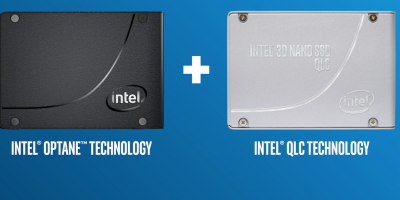Intel promises a new era in storage with combined technologies
In this, its 50th year, Intel has combined the Optane solid state drive (SSD) and the QLC 3D NAND technologies to accelerate the speed of frequently accessed data and increasing storage capacity to above that of hard disk drives (HDDs).
“Intel Optane and 3D NAND technologies ensure computer and storage architects and developers can access vital data where and when they need it. The two technologies bridge the wide gap that exists between data that’s being worked on and data that’s waiting to be accessed,” said Rob Crooke, senior vice president and general manager of the Non-Volatile Memory Solutions Group at Intel.
Intel says that its aim is to break bottlenecks and deliver better solutions to unleash the value of data. The basis for this marriage are exampled such as where Intel Optane SSDs integrated into IBM Cloud’s bare metal servers have enabled up to 7.5 times improvement, especially for applications that have high write-intensive operations. In another example, Intel cites the University of Pisa reducing MRI scan times from 42 minutes to four minutes, and enabling Chinese IT company, Iflytek, to enable faster voice and facial recognition services.
Intel’s QLC 3D NAND products have been used by Tencent, employing the QLC PCIe Intel SSD D5-P4320 , increased by a factor of 10, the number of customers served on a per-system basis.
Intel claims that its SSD 660p (for client) and the SSD D5-P4320 (data centre) are the world’s first QLC PCIe 3D NAND SSDs for their segments, offering the highest PCIe areal density on the market at an affordable price. With up to 2.0Tbyte of storage in one drive for the 660p and 8.0Tbyte for the P4320, these QLC SSDs have the capacity to replace hard drives. The 660p’s M.2 80mm form factor provides two times more capacity than TLC-based storage, says Intel. In the data centre, the P4320 enables users to store more, save more and do more than legacy solutions, continues the company.
Intel also claims that its Optane Memory and Optane SSDs have changed the PC space and now addresses the data centre, where managing vast amounts of data require the high performance of Intel Optane paired with the capacity-storage power of Intel QLC 3D NAND.




